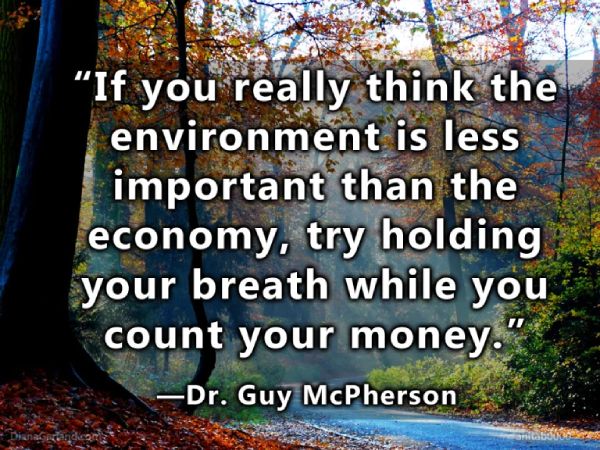Image: natanvance, Pixabay, CC0
May 5, 2013 | What Is Sustainable
The majority of modern society is clustered together in the hope and optimism pavilion, taking deep tokes on the bong of pleasure-filled fantasies (cough!). At the other end of the spectrum are the Near Term Extinction (NTE) folks. They profess absolute certainty that climate change will be the final chapter in the human story. Our current mode of living will disintegrate by 2030, and a few scientists, like Malcolm Light, predict that all life on Earth will be extinct by 2050. Ecology professor Guy McPherson is a primary spokesperson for NTE.
The NTE thinkers point to many genuine problems that are intensifying every day. They describe a number of “positive feedbacks,” where one problem stimulates the worsening of other problems, accelerating the overall pace of destruction more and more. A small disturbance can trigger a large avalanche. They chastise the big name climate activism celebrities for failing to realize the actual risks these feedbacks, and, consequently, for preaching sermons tainted with false hope.
Rapid heating will destroy agriculture, release fabulous amounts of methane, and blindside every ecosystem on the planet. The bright white polar ice caps are quite reflective, and bounce away a lot of incoming solar heat, but they are melting and shrinking. Oceans may become so acidic that only jellyfish remain.
The burning of fossil fuels will fade with the demise of industry, so less incoming solar energy will be blocked by layers of pollution, speeding the warming process even more. When the power grid dies, the pumps will quit at 440+ nuclear power plants. So, the cooling ponds for spent fuel rods will evaporate, the rods will burn, and ionized radiation will poison the planet. And so on.
Acknowledging these sobering ideas is necessary for those who wish to be present in reality. It is well within the realm of possibility that their predictions will turn out to be correct — but not 100 percent certain, with a double your money back guarantee. We’ve never destroyed a planet before, so our understanding of this sad process remains primitive.
Many members of the NTE community are highly intelligent, very well informed, and ruthlessly skeptical of every mainstream idea. This combination of attributes does not result in a merry band of giggly bliss ninnies. They comprehend the existence of enormous problems. At the same time, they also comprehend that humankind is largely ignoring these problems. It’s a heartbreaking disconnect. The great majority of people simply fail to perceive the presence of great danger, because their lives still seem normal, today.
Extinction would neatly solve every single one of our problems, and would be a great relief for the family of life. We were certain to go extinct at some point in the future anyway. Uff! But what if there are still some humans alive 100 years from now? Humans, insects, and bacteria are exceptionally adaptable, and a portion of them may have an extended future. Because of that possibility, I do this work. The NTE folks shrug and label me normal (still asleep). So be it.
I’m very happy that I’m not going to live to see the end of the collapse (I hope). What the survivors, if any, choose to do is entirely beyond my control. I am not responsible for the decisions they make, but I am responsible for doing what I can to help them understand their history, predicament, and options. Nothing can change until ideas change. So, one of the most essential occupations for those living now is to become idea mongers. This is a path of great power, and there are Help Wanted signs all over the place.
Before we call it a day, let’s jump in our Hummer and take a quick tour of the NTE neighborhood. Their mosque is called Nature Bats Last, Guy McPherson’s blog. Click on the Climate Change Summary link. You’ll learn a lot about a wide variety of subjects. (The links below are just a tiny sample of the information available on the following issues.)
Global Warming. Climate scientists have been doing a good job of underestimating the rate at which carbon is accumulating in the atmosphere, and raising the planet’s temperature. New and improved models generated by the UN in 2010 predicted a rise of 5° C by 2050. Some believe that warming of 4° to 6° C results in a dead planet, and that this could happen in a decade.
Melting Permafrost. Melting permafrost will release enormous amounts of greenhouse gases. There is also underwater permafrost, and it too is melting and off gassing methane.
Tundra fires. Arctic summers are getting warmer and dryer, and the carbon-rich tundra soils readily burn when dry. Fire actually burns up the soil, exposing the permafrost below to warmer temperatures. On the surface of the burned land, dark ash absorbs more solar heat, melting the permafrost faster.
Peat Fires. Warmer, dryer weather is drying out peat lands, which contain one third of the world’s soil carbon. Peat fires are often ignited by lightning or passing wildfires, and they are difficult or impossible to extinguish. Some burn for years, or even centuries. In 2010 there were huge peat fires in Russia.
Ocean Acidification. One third of carbon dioxide emissions are absorbed by the oceans, which is increasing their levels of acidity. Plankton in the ocean provides 50 percent of the oxygen in the atmosphere. This oceanic oxygen production is now six percent less than it was 30 years ago. Growing acidity is harmful to marine life and coral reefs.
Ionized Radiation. There are about 440 nuclear power plants in the world, and they generate lots of radioactive waste that will be extremely toxic for a very long time. These wastes are stored in cooling ponds, a short-term solution. There is no long-term solution. Extended power outages will allow the cooling ponds to evaporate, at which point the fuel rods will burn, and spew radiation to the four winds.
Oceanic Deoxygenation. Climate change is stratifying oceanic waters, and warming the upper layers. This will reduce the dissolved oxygen in the water, leading to the expansion of dead zones. Some regions have experienced significant deoxygenation over the last 50 years, and many expect this problem to worsen, possibly for the next thousand years.
Atmospheric Deoxygenation. Levels of oxygen in the atmosphere are declining. Three hundred million years ago, the air was 30 percent oxygen. Ancient dragonflies had four-foot wingspans. Today it’s between 19 and 21 percent, and 12 to 17 percent in urban areas. When it gets to 6 or 7 percent, we cannot survive. Oxygen is consumed when carbon is burned.
Methane Catastrophe. This report, written by Malcolm Light, is not intended for the general reader. The first paragraph includes this jarring sentence: “This process of methane release will accelerate exponentially, release huge quantities of methane into the atmosphere and lead to the demise of all life on earth before the middle of this century.”
****
Richard Reese lives in Eugene, Oregon. He is the author of What Is Sustainable, Sustainable or Bust, and Understanding Sustainability. His primary interest is ecological sustainability, and helping others learn about it. His blog wildancestors.blogspot.com includes free access to reviews of more than 160 sustainability-related books, plus a few dozen rants.
Reprinted with permission from the author.









